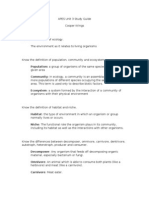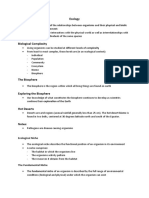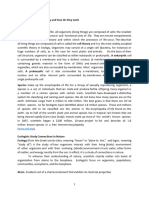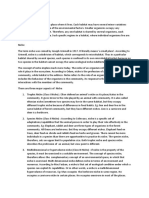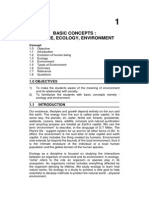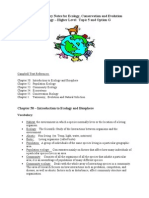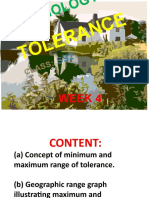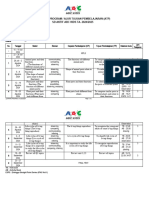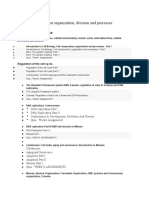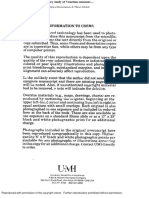0 ratings0% found this document useful (0 votes)
13 viewsEco - Chapter 6
Eco - Chapter 6
Uploaded by
Apple Mae Balunan AndujarCopyright:
© All Rights Reserved
Available Formats
Download as PPTX, PDF, TXT or read online from Scribd
Eco - Chapter 6
Eco - Chapter 6
Uploaded by
Apple Mae Balunan Andujar0 ratings0% found this document useful (0 votes)
13 views16 pagesOriginal Title
Eco.chapter 6
Copyright
© © All Rights Reserved
Available Formats
PPTX, PDF, TXT or read online from Scribd
Share this document
Did you find this document useful?
Is this content inappropriate?
Copyright:
© All Rights Reserved
Available Formats
Download as PPTX, PDF, TXT or read online from Scribd
Download as pptx, pdf, or txt
0 ratings0% found this document useful (0 votes)
13 views16 pagesEco - Chapter 6
Eco - Chapter 6
Uploaded by
Apple Mae Balunan AndujarCopyright:
© All Rights Reserved
Available Formats
Download as PPTX, PDF, TXT or read online from Scribd
Download as pptx, pdf, or txt
You are on page 1of 16
CHAPTER 6
LIMITING FACTORS AND RANGES
OF TOLERANCE
Habitat
A special place where every species in a
community lives.
Is the ecological or environmental area that is
inhabited by a particular animal or plant
species.
The natural environment in which an organism
lives, or
The physical environment that surrounds
(influences and is utilized by) a species
population.
Subdivisions of Habitats
Terrestrial or land habitat
Aquatic or water habitat
Marine or salt water habitat
Fresh water habitat
Brackish or water in an estuary
Microhabitat
A physical location that is home to very small
creatures, such as woodlice
Ecological Niche
An understanding of how an organism
effectively survives and manages its
immediate habitat.
The operation of living communities
necessitates study of the relationships among
all organism.
A term describing the relational position of a
species or population in its ecosystem to each
other.
“niche” is derived from Middle French word
nicher, meaning to nest.
Coined by the naturalist Joseph Grinnell in
1917.
A short definition of niche is how an organism
makes a living.
Habitat is the organism’s address while niche
is its profession.
RELATED TERMS
Fundamental Niche-
the full range of environmental conditions
(biological and physical) under which an
organism can exist describes.
Realized Niche
Organisms occupy a niche that is narrower
which they are mostly highly adapted as a
result of pressure from superior competitors.
Limiting Factors
A factor that controls a process, such as
organism growth or species population, size
or distribution.
Availability of food, predation pressure or
availability of shelter.
Liebig’s Law of the Minimum
Also known as Liebig’s Law or the Lao of the
Minimum.
Developed in agricultural science by Carl
Sprengel (1828) and later popularized by
Justus von Liebig.
It states that growth is controlled not by the
total of resources available, but by the
scarcest resource (limiting factor).
Range of tolerance
Organisms with narrow ranges of tolerance
(prefix- steno)
Organisms with broad ranges of tolerance
(prefix- eury)
Euryhydric- broad range of tolerance for soil
moisture.
Stenohydric- narrow range of tolerance for
soil moisture.
Shelfords Law of Tolerance
A law proposed by V.E. Shelford in 1913.
States that “the presence and success of a
organism depend upon the extent to which a
complex of conditions are satisfied. The
absence or failure of an organism can be
controlled by the qualitative or quantitative
deficiency or excess or any one of several
factors which may approach the limits of
tolerance for that organism.”
Subsidiary principles of
Shelfords Law
Organism may have a wide range of tolerance
for one factor and a narrow range of
tolerance for another.
Organisms with wider range of tolerance for
all factors are likely to be most widely
distributed.
Acclimation
Also known as acclimatization.
The process of an organism adjusting to
change in its environment.
Ecotypes
Coined by Gote Turesson in 1922.
Used to describe a genetically distinct
geographic variety, population or race within
species.
Adapted to specific environmental conditions
such as local selective pressure or physical
isolation.
You might also like
- Ecology Fact SheetsDocument9 pagesEcology Fact Sheetsapi-198270301No ratings yet
- Problem Set 1Document4 pagesProblem Set 1annon55555No ratings yet
- Campbell Chapter 43 NotesDocument13 pagesCampbell Chapter 43 NotesRyan LiuNo ratings yet
- Andriani Daskalaki-Handbook of Research On Systems Biology Applications in Medicine (2008)Document917 pagesAndriani Daskalaki-Handbook of Research On Systems Biology Applications in Medicine (2008)Алексей Почтилейтинантзапаса100% (2)
- Limiting Factors and ToleranceDocument18 pagesLimiting Factors and Tolerancearvinric83% (6)
- Lecture Five AEX 204Document3 pagesLecture Five AEX 204Samuel maixhNo ratings yet
- Definition of Terms BiologyDocument1 pageDefinition of Terms BiologyAaron AlvaranNo ratings yet
- Law of The Limiting FactorsDocument4 pagesLaw of The Limiting FactorsBiswajit DarbarNo ratings yet
- Biology For The IB Diploma - Option C - Ecology and ConservationDocument75 pagesBiology For The IB Diploma - Option C - Ecology and ConservationjjkjljNo ratings yet
- Definition of Terms BiologyDocument1 pageDefinition of Terms BiologyAaron AlvaranNo ratings yet
- History LawsDocument3 pagesHistory Lawsreygie cardenoNo ratings yet
- Population Ecology 1S 24 25Document35 pagesPopulation Ecology 1S 24 25rizzelvitales4No ratings yet
- APES Unit 3 Study GuideDocument5 pagesAPES Unit 3 Study GuideCooper KringsNo ratings yet
- Notes On EcologyDocument3 pagesNotes On EcologyTajjjNo ratings yet
- 3.0 Community InteractionDocument95 pages3.0 Community InteractionAT4-11 HUMSS 2 CEDRICK ILAONo ratings yet
- SZL202 Topic Two Habitat and NicheDocument5 pagesSZL202 Topic Two Habitat and Nichemarubegeoffrey41No ratings yet
- Basics of Environment & Ecology 01 - Daily Class Notes (English)Document21 pagesBasics of Environment & Ecology 01 - Daily Class Notes (English)jaylaxmijena100No ratings yet
- History of EcologyDocument8 pagesHistory of EcologyDebanand BiswasNo ratings yet
- Ecosytem and Characteristic of PopulationDocument7 pagesEcosytem and Characteristic of PopulationJane OrsalNo ratings yet
- Lesson 5Document5 pagesLesson 5Dianna Rose Villar LaxamanaNo ratings yet
- mODULE 3Document33 pagesmODULE 3Michael Clinton DionedaNo ratings yet
- BIO 202 TSU NOTESDocument44 pagesBIO 202 TSU NOTESjoeljude544No ratings yet
- Lecture 1 - Introduction To Ecology PDFDocument40 pagesLecture 1 - Introduction To Ecology PDFSangga Buana Komara100% (1)
- ESS BookDocument383 pagesESS BookThe Virtual VlogsNo ratings yet
- Biodiversity 20231110 095224 0000Document16 pagesBiodiversity 20231110 095224 0000expbelle0417No ratings yet
- 26c726baf1e7dfa5ce3042460e04360cDocument11 pages26c726baf1e7dfa5ce3042460e04360cAaryan MoreNo ratings yet
- Evolution and MeaningDocument12 pagesEvolution and MeaningAmritanshu PandeyNo ratings yet
- Lec 2-3Document12 pagesLec 2-3Philippe CoutinhoNo ratings yet
- Limiting FactorsDocument2 pagesLimiting FactorsBiju ThomasNo ratings yet
- Ecosystems and Limiting FactorsDocument4 pagesEcosystems and Limiting FactorsKadeem NesbittNo ratings yet
- Ecology Is The Relationships Between OrganismsDocument6 pagesEcology Is The Relationships Between OrganismsNushiie xNo ratings yet
- Ecological NicheDocument3 pagesEcological NicheBiju ThomasNo ratings yet
- What Is Ecology?: Organismal Ecology Looks at How Individuals Interact With Their Environment, Which Is Made UpDocument3 pagesWhat Is Ecology?: Organismal Ecology Looks at How Individuals Interact With Their Environment, Which Is Made UpNandini_KotharkarNo ratings yet
- Earth and Life 1Document61 pagesEarth and Life 1Glyneth Dela TorreNo ratings yet
- Env Mistakes To Learn FromDocument55 pagesEnv Mistakes To Learn FromAnushka NandkeolyarNo ratings yet
- Glossary of ecology - WikipediaDocument18 pagesGlossary of ecology - WikipediaMMALTEZ, RALPH CHRISTIAN, R.No ratings yet
- Habitat and NicheDocument18 pagesHabitat and NicheTuti HandayeniNo ratings yet
- Biodiversity Conservation: The Discussion On Each Type of Diversity Is Given Below: 1. Genetic DiversityDocument22 pagesBiodiversity Conservation: The Discussion On Each Type of Diversity Is Given Below: 1. Genetic DiversitySOHEL BANGINo ratings yet
- Ecological NicheDocument2 pagesEcological NicheTousif Ahmed BhattiNo ratings yet
- ESS Key Terms and DefinitionsDocument8 pagesESS Key Terms and DefinitionsIrfaan JafferNo ratings yet
- Biological CommunitiesDocument9 pagesBiological CommunitiesRhodelyn TolentinoNo ratings yet
- Ecological TermsDocument9 pagesEcological Termsdrjgkpathan5866No ratings yet
- Week 1-2 Progress CheckDocument5 pagesWeek 1-2 Progress CheckJoshua Ray CalagoNo ratings yet
- M.a.part - II - Paper ViiDocument174 pagesM.a.part - II - Paper Viinv_xp750% (2)
- Unit SummaryDocument46 pagesUnit SummaryRajesh XavierNo ratings yet
- Or in The, ,: PH Forest Fire EnvironmentDocument5 pagesOr in The, ,: PH Forest Fire EnvironmentSara Priya ChaudharyNo ratings yet
- Chapter Three: 3.principles of Wildlife Ecology 3.1 - Wildlife Habitat, Cover and Territory 3.1.1. Wildlife HabitatDocument86 pagesChapter Three: 3.principles of Wildlife Ecology 3.1 - Wildlife Habitat, Cover and Territory 3.1.1. Wildlife HabitatnasimalshoqNo ratings yet
- Biodiversity and Extinction: Rene N. Ramilo Ch.E, LPT Faculty, Tarlac Montessori SchoolDocument55 pagesBiodiversity and Extinction: Rene N. Ramilo Ch.E, LPT Faculty, Tarlac Montessori SchoolRene RamiloNo ratings yet
- Demo EnvsDocument4 pagesDemo EnvsRitabrata KarmakarNo ratings yet
- Sir Aian MidtermDocument6 pagesSir Aian MidtermEl TigreNo ratings yet
- 004) EnvironmentDocument152 pages004) EnvironmentBhargav RajNo ratings yet
- Dictionary Of Ecology & Environmental Sciences: A book by Rakibul Hasan MahmudFrom EverandDictionary Of Ecology & Environmental Sciences: A book by Rakibul Hasan MahmudNo ratings yet
- Group 2 - Habitat and NicheDocument22 pagesGroup 2 - Habitat and NicheYudha OkpriandaNo ratings yet
- Ss2 Bio TRM 2 WK 4 - 5Document64 pagesSs2 Bio TRM 2 WK 4 - 5ALPHEAUS-MBA AwajibenejiNo ratings yet
- BiodiversityDocument41 pagesBiodiversityAditya MahakalNo ratings yet
- Environmental EngineeringDocument117 pagesEnvironmental Engineeringcherrytanierla07No ratings yet
- Concepts of Ecology Lecture NotesDocument4 pagesConcepts of Ecology Lecture NotesOguh AugustineNo ratings yet
- Biogeographic ProcessesDocument16 pagesBiogeographic ProcessesRuby BelecinaNo ratings yet
- Enviromental ScienceDocument14 pagesEnviromental ScienceAlforque Maverick JohnNo ratings yet
- Biodiversity: Explore the Diversity of Life on Earth with Environmental Science Activities for KidsFrom EverandBiodiversity: Explore the Diversity of Life on Earth with Environmental Science Activities for KidsNo ratings yet
- Address of His Eminence Ricardo J. Cardinal Vidal On The Occasion of The Prayer Vigil For All Nascent Life at Cebu Cathedral-Dec.16,2010Document2 pagesAddress of His Eminence Ricardo J. Cardinal Vidal On The Occasion of The Prayer Vigil For All Nascent Life at Cebu Cathedral-Dec.16,2010Apple Mae Balunan AndujarNo ratings yet
- The Parable of The Three Servants or TalentsDocument3 pagesThe Parable of The Three Servants or TalentsApple Mae Balunan AndujarNo ratings yet
- Introduction To Information TechnologyDocument12 pagesIntroduction To Information TechnologyApple Mae Balunan AndujarNo ratings yet
- THE CHURCH TODAY AND THE CRUCIAL TASKS FOR HEALING by FR OratDocument7 pagesTHE CHURCH TODAY AND THE CRUCIAL TASKS FOR HEALING by FR OratApple Mae Balunan AndujarNo ratings yet
- Three Little PigsDocument6 pagesThree Little PigsApple Mae Balunan AndujarNo ratings yet
- TC Ec 322 (Quiz) - Answer KeyDocument3 pagesTC Ec 322 (Quiz) - Answer KeyApple Mae Balunan AndujarNo ratings yet
- Articles 2019 and UpDocument5 pagesArticles 2019 and UpApple Mae Balunan AndujarNo ratings yet
- PC315Document11 pagesPC315Apple Mae Balunan AndujarNo ratings yet
- Module 3 (Eed16)Document1 pageModule 3 (Eed16)Apple Mae Balunan AndujarNo ratings yet
- EcologyDocument14 pagesEcologyhmusmann823No ratings yet
- Bio Topic 1.6 WorksheetDocument4 pagesBio Topic 1.6 WorksheetMahina WongNo ratings yet
- Eukaryotic Transcription Factors PDFDocument2 pagesEukaryotic Transcription Factors PDFRyanNo ratings yet
- 2024-2025 LP Science G4 Q1Document2 pages2024-2025 LP Science G4 Q1Komang AnggarwatiNo ratings yet
- Mitosis Meiosis Teachers Guide Discovery EducationDocument32 pagesMitosis Meiosis Teachers Guide Discovery EducationKari Kristine Hoskins Barrera0% (2)
- General Biology 2Document13 pagesGeneral Biology 2Lerma SumacbayNo ratings yet
- Cell Division 11th Sci NotesDocument8 pagesCell Division 11th Sci NotesmehrunnisasannakkiNo ratings yet
- 03 - CP SCE 3107 - Weekly ReadingsDocument3 pages03 - CP SCE 3107 - Weekly ReadingsytengkuNo ratings yet
- IB Cell Division NoteDocument1 pageIB Cell Division Note다윤No ratings yet
- Análise Comparativa Do Gasto Energético Entre As Equações de Harris-Benedict e de Long e A Calorimetria Indireta em Pacientes SépticosDocument8 pagesAnálise Comparativa Do Gasto Energético Entre As Equações de Harris-Benedict e de Long e A Calorimetria Indireta em Pacientes SépticosJoão Lucas SimõesNo ratings yet
- BIO 104 Syllabus Fall 2020Document9 pagesBIO 104 Syllabus Fall 2020shyam430mNo ratings yet
- Concept of Food ChainDocument31 pagesConcept of Food ChainSachin ShrivastavNo ratings yet
- GradElectiveCourses 2024-01-12 2Document2 pagesGradElectiveCourses 2024-01-12 2vastezcNo ratings yet
- Cell Biology NPTEL SyllabusDocument3 pagesCell Biology NPTEL SyllabusJegatheesan KalirajanNo ratings yet
- Gen Bio 1Document3 pagesGen Bio 1Trisha Camille MacarioNo ratings yet
- Bellissima Donna An InterdiscDocument530 pagesBellissima Donna An InterdiscbrookrigiNo ratings yet
- SSC LDC Mock Test-04Document5 pagesSSC LDC Mock Test-04Vivek KumarNo ratings yet
- Cellular Reproduction and GeneticsDocument31 pagesCellular Reproduction and GeneticsMary Grace LemonNo ratings yet
- Group 1 Bio PPT With HopeeeeDocument45 pagesGroup 1 Bio PPT With HopeeeeLJ Princess Mary MontenegroNo ratings yet
- Chapter 5: The Mitotic Cell CycleDocument7 pagesChapter 5: The Mitotic Cell CycleWei Jern0% (1)
- Biology B: Pearson Edexcel Level 3 GCEDocument95 pagesBiology B: Pearson Edexcel Level 3 GCEaliceNo ratings yet
- Lecture 7: Multiple Sequence Alignment (MSA) What Is Multiple Sequence Alignment?Document6 pagesLecture 7: Multiple Sequence Alignment (MSA) What Is Multiple Sequence Alignment?Yogi BhaskarNo ratings yet
- CellBio - 2018022814500981 PART-IDocument11 pagesCellBio - 2018022814500981 PART-Iahmed hussien kamelNo ratings yet
- Chapter 33Document16 pagesChapter 33Shfici AdanNo ratings yet
- Chapter End Test: BiologyDocument2 pagesChapter End Test: BiologyDharmendra Singh (BG022)No ratings yet
- Ch16 Test File-Regulation of Gene ExpressionDocument38 pagesCh16 Test File-Regulation of Gene ExpressionRojan MirmohamadiNo ratings yet
- Grade 7: 3 Monthly Test in ScienceDocument3 pagesGrade 7: 3 Monthly Test in ScienceVangie R. BarriosNo ratings yet












